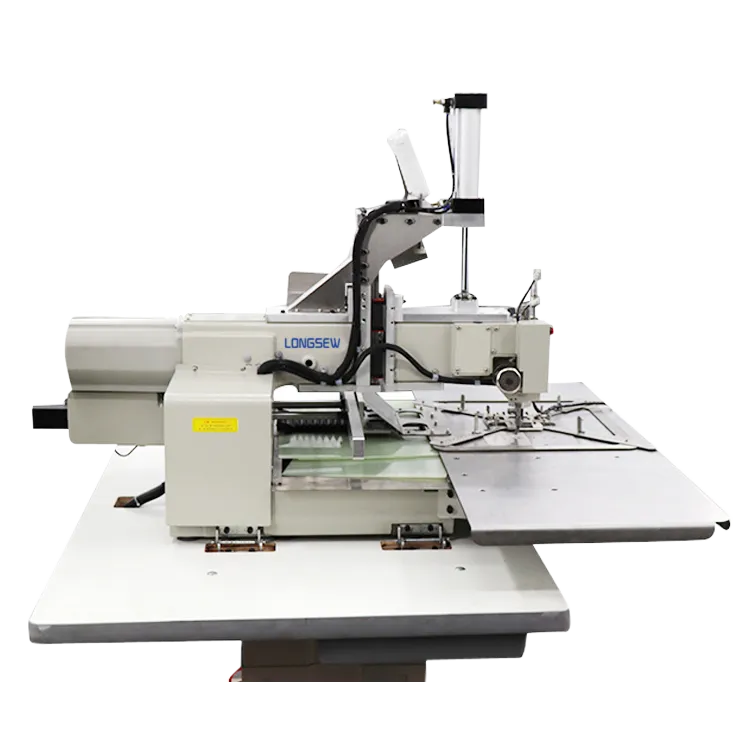woven sack stitching machine
The Evolution and Benefits of Woven Sack Stitching Machines
The advent of woven sack stitching machines marks a significant development in the textile industry, particularly in the packaging sector. These machines are quintessential in the production of durable woven sacks, which are used in various applications, from agricultural produce to industrial products like chemicals and fertilizers. As global trade expands and the demand for efficient packaging solutions increases, understanding the functionalities and advantages of woven sack stitching machines becomes crucial.
What are Woven Sack Stitching Machines?
Woven sack stitching machines are specialized equipment designed to sew or stitch the top openings of woven sacks securely. These sacks are typically made from polypropylene or other synthetic materials, ensuring high strength and resistance to tearing. The stitching process is vital as it ensures the contents of the sack remain secure during transportation and storage.
Technological Advancements in Stitching
Over the years, woven sack stitching machines have evolved significantly. Early versions were manually operated, requiring considerable labor and time. However, advancements in technology have led to the development of automatic and semi-automatic machines that significantly enhance productivity.
Modern woven sack stitching machines come equipped with features such as programmable control systems, which allow operators to adjust stitching patterns and tensions to suit different types of sacks. Additionally, these machines often incorporate high-speed stitching capabilities, enabling companies to process a higher volume of sacks within a shorter timeframe.
Benefits of Using Woven Sack Stitching Machines
1. Increased Efficiency Automated stitching machines enhance operational efficiency. They reduce the time taken to package sacks, allowing manufacturers to meet higher production demands while minimizing labor costs. With the ability to produce thousands of stitched sacks in a day, companies can scale their operations effectively.
woven sack stitching machine

2. Consistent Quality The precision offered by modern stitching machines ensures that each sack is stitched uniformly. This consistency is crucial for maintaining the integrity of the products within the sacks, as uneven stitching can lead to open seams and content spillage.
3. Versatility Woven sack stitching machines can handle various sack sizes and types. Whether it’s small bags of fertilizer or large sacks of grain, these machines can adapt to different production requirements. This versatility enables manufacturers to cater to a broader market.
4. Cost-Effectiveness Although the initial investment in high-quality woven sack stitching machines can be substantial, the long-term savings are significant. By reducing labor costs and improving speed and efficiency, businesses can see a return on their investment much sooner than anticipated.
5. Environmental Impact As sustainability becomes a focal point for many industries, producing woven sacks can also align with eco-friendly practices. Many woven sacks are recyclable and can be reused multiple times, which helps to reduce waste and the overall carbon footprint of packaging processes.
The Future of Woven Sack Stitching Machines
The future holds promising advancements for woven sack stitching machines. With the rise of Industry 4.0, the integration of smart technology and IoT (Internet of Things) capabilities into these machines is on the horizon. This will enable real-time monitoring of production processes, predictive maintenance, and improved overall operational efficiency.
Automation will move beyond just stitching to encompass the full packaging process—from cutting and weaving the fabric to filling and sealing the sacks. This holistic approach promises to revolutionize the industry, delivering higher-quality products at unprecedented speeds.
Conclusion
Woven sack stitching machines are more than just tools; they are pivotal in shaping the efficiency and effectiveness of the packaging industry. Their continuous evolution driven by technological advancements not only meets the demands of a growing market but also responds to the challenges of productivity and sustainability. As manufacturers increasingly rely on these machines, the importance of understanding and investing in this technology becomes ever more critical. Industries that embrace these innovations will likely lead the way in the competitive global market, delivering quality products seamlessly to consumers worldwide.
-
Heavy Duty Leather Sewing Machine: A Must-Have for Professional LeatherworkNewsMay.28,2025
-
Leather Sewing Machine: Essential for High-Quality LeathercraftNewsMay.28,2025
-
Extra Heavy Duty Sewing Machine for Premium Leather ApplicationsNewsMay.28,2025
-
Walking Foot Cylinder Arm Sewing Machine: Precision and Power CombinedNewsMay.28,2025
-
Industrial Cylinder Arm Sewing Machine: Engineered for High-Performance StitchingNewsMay.28,2025
-
Cylinder Bed Sewing Machine: A Powerful Solution for Precision StitchingNewsMay.28,2025
-
Zigzag Sewing MachineNewsMay.12,2025





























